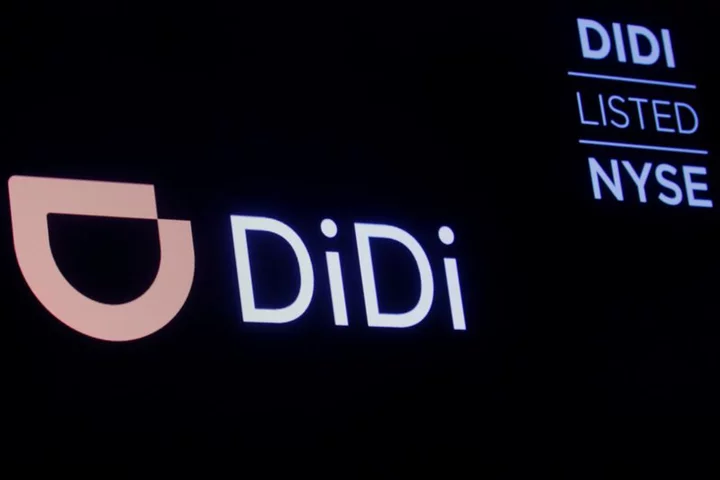By Helen Coster
NEW YORK Publisher Gannett plans to include generative artificial intelligence in the system it uses to publish stories as it and other news organizations begin to roll out the popular technology that may help save money and improve efficiency.
But the largest U.S. newspaper publisher with over 200 daily outlets said it will include humans in the process so that the technology can’t be deployed automatically, without oversight. Generative AI is a way to create efficiencies and eliminate some tedious tasks for journalists, Renn Turiano, senior vice president and head of product at Gannett said in a recent interview with Reuters.
However, Turiano added, “The desire to go fast was a mistake for some of the other news services,” he said without singling out a specific outlet. “We’re not making that mistake.”
Gannett is hardly alone in its balancing act. For instance Reuters President Paul Bascobert said in a statement Thursday, responding to a reporter's request for comment about the company’s plans, that as the news agency embraces AI technologies, it is "taking a responsible approach that safeguards accuracy and fosters trust.”
Many U.S. newsrooms are grappling with how best to incorporate AI tools that generate new content or data in response to a prompt, or question, by a user.
But generative AI's limitations, which include the tendency to “hallucinate,” or serve up misinformation with a veneer of certainty, are particularly problematic in an industry that demands accuracy, some experts say.
“Where I am right now is I wouldn’t recommend these models for any journalistic use case where you’re publishing automatically to a public channel,” said Northwestern University associate professor Nicholas Diakopoulos.
Gannett’s strategy reflects the measured approach a number of mainstream newsrooms are taking.
Their caution follows well-publicized generative AI gaffes at media outlets including CNET and Men’s Journal. Both publications used the technology to generate stories that contained factual errors.
Next quarter Gannett will roll out a live pilot program using AI to identify the most important points of an article and create bulleted summaries at the top of it. It will launch that feature in the fourth quarter at USA Today. Journalists will have the final say, deciding whether to use what the AI proposed. Gannett will eventually incorporate that summarization technology into its publishing system.
Gannett's journalists are fighting to ensure that they aren't replaced by the technology. Hundreds walked off the job over staff cuts and stagnant wages on June 5. Generative AI is a sticking point in some negotiations with the company, the union said.
“The concern other than seeing our colleagues replaced is that we don’t believe it’s an adequate replacement,” said Ilana Keller, a journalist at the Asbury Park Press in New Jersey.
A company spokesperson said its use of AI will not replace journalists, and that it is being used as a tool to help them be more efficient and focus on creating more valuable content.
Last year Gannett, which has $1.23 billion in debt from its 2019 merger with GateHouse, laid off more than 600 employees. But its cost-cutting has made it profitable.
'NOT THERE YET'
As part of its push, Gannett is also developing a generative AI tool that would take long-form stories and break them into various lengths and formats, like bullet points or captions on photos to create a slideshow.
To summarize its stories, Gannett is relying on Cohere, a company that competes with Microsoft-backed OpenAI, which developed the ChatGPT chatbot. Gannett spent two weeks training Cohere’s large language model on 1,000 previously-published stories with summaries written by its reporters.
To train the model further, journalists from USA Today’s politics team reviewed and edited automated summaries and bullet point highlights.
While most news organizations have long relied on some form of artificial intelligence to do things like recommending and personalizing content, new developments in generative AI are reigniting industry interest.
Gannett has also experimented with natural language generation (NLG), a form of artificial intelligence that builds a text narrative around factual data, creating a story. It doesn't "think" like generative AI. Journalists review the stories prior to publication.
Other news outlets are approaching generative AI with varying levels of commitment and caution. The New York Times and the Washington Post are in the planning phase, according to a Times memo seen by Reuters and a Washington Post announcement.
Bloomberg, which competes with Reuters, is developing its own generative AI model, BloombergGPT, which it trained on financial data.
The New York Times, Washington Post and Bloomberg declined to provide additional comment on their plans.
Reuters is using AI for voice-to-text transcription to produce scripts and subtitles for video, for example, but it is not publishing AI-generated stories, videos or photographs, according to a May message to staff from Editor-in-Chief Alessandra Galloni about AI guidance for Reuters journalists.
BBC News Labs, the broadcaster's innovation incubator, is testing whether it can semi-automate the generation of short-form explainers.
For those stories, BBC News Labs built a prototype that draws on pre-published pieces of BBC content and uses the ChatGPT-3 model to write it. “It could never get anywhere near an audience unless a journalist has manually pulled it out," said Miranda Marcus, head of the BBC News Labs.
“There’s a whole other universe of what kinds of stories can we tell with these tools,” added Marcus. “But we’re not there yet.”
(Reporting by Helen Coster; Editing by Anna Driver)









